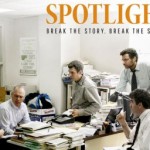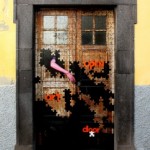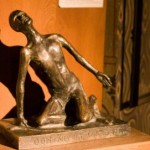In the be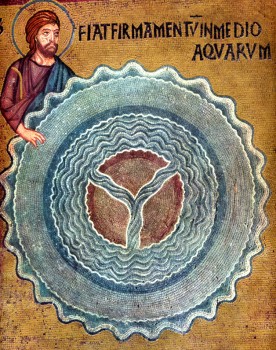 ginning . . . .
ginning . . . .
The roar of white-hot, full-throated argument erupts at the word beginning. The trail of this argument has been marked with the tears of science teachers denied tenure and the rage of preachers and parents demanding that creationism be taught in public schools. We shatter the peace to which Christ called us, in order to make war over a beginning that we do not know but can only begin to imagine.
The paleontologist Stephen Jay Gould, a devoted and brilliant interpreter of Darwinism, had coffee mugs in his office (where students were invited weekly for informal conversation) with the words, No Vestige of a Beginning, No Prospect of an End, printed on them.
Call it a motto, call it a creed, Gould was testifying to the wisdom Darwin had first set down in writing, that the world has not marched along for eons according to an administrative plan, and that Jesus did not arrive among us at a pre-assigned moment that is now leading us toward the end of all time.
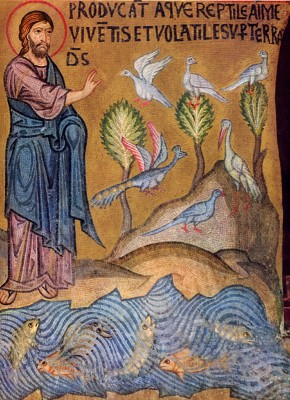 And I believe that John, who began his gospel with the words in the beginning . . . would embrace Gould, and find in him a kindred spirit in affirming the mystery of this world. John’s gospel, written later than the others, tries to get beyond the stalemated arguments of his own time, arguments over where Jesus came from, arguments over how he came to be, arguments about Jesus’ baptism proving John to be Jesus’ spiritual father (and John debunks this in his brief telling of that tale), arguments over mutterings about Mary and the angel.
And I believe that John, who began his gospel with the words in the beginning . . . would embrace Gould, and find in him a kindred spirit in affirming the mystery of this world. John’s gospel, written later than the others, tries to get beyond the stalemated arguments of his own time, arguments over where Jesus came from, arguments over how he came to be, arguments about Jesus’ baptism proving John to be Jesus’ spiritual father (and John debunks this in his brief telling of that tale), arguments over mutterings about Mary and the angel.
John throws the questions of origin into the vastness of a time before all times. He was always in the world, John says, and is in everything in the world. And became flesh when the time was right.
Nothing in John’s words denies the roles of chaos and chance, in creation, in history, in the evolution of cultures and nations and religions. John’s assertion of the presence of Christ in darkness, and unseen, is so much more a wonder when the eons are chance-ridden and chaotic, than if time ran like clock-work. The moment of Christ’s birth, in this wisdom, becomes one of Gould’s moments of Punctuated Equilibrium, when the convergence of forces brings about a change in which new life is suddenly and amazingly possible, and the world is greatly changed.
 Gould used the scientific discoveries of preserved life forms in the Burgess Shale in Canada to prove this theory. In a single unpredictable event, some that had been powerful became extinct, and a few that had been lowly before, became the best survivors in the new world. Gould wrote about all this in a book called Wonderful Life, his title taken from Frank Capra’s classic film, It’s a Wonderful Life, in which George Bailey is helped to wisdom about his own life by an angel-in-training, Clarence Oddbody, and the wisdom learned is the significance of chance and adaptation, two of Darwin’s great themes.
Gould used the scientific discoveries of preserved life forms in the Burgess Shale in Canada to prove this theory. In a single unpredictable event, some that had been powerful became extinct, and a few that had been lowly before, became the best survivors in the new world. Gould wrote about all this in a book called Wonderful Life, his title taken from Frank Capra’s classic film, It’s a Wonderful Life, in which George Bailey is helped to wisdom about his own life by an angel-in-training, Clarence Oddbody, and the wisdom learned is the significance of chance and adaptation, two of Darwin’s great themes.
My own heart is grieved by those who insist that the image of God must be a Great Administrator, who has issued Billion Year Plans and severely oversees their implementation. How far from the image in Genesis of God as Artist, as Creator, who brings forth what he has only partly imagined, each tree, bird, fish, person, like each potter’s pot, taking on a form that is and is not intended, a form that owes its life to its origins and yet becomes something new. It is the newness in each that keeps the potter excitedly bent over the wheel, which is not, after all, an assembly line kind of creation. Each Day; each generation; each child; is a new being. And in the act of creation, the potter also is being born, more and more with each clay creation. This is true as well for composers, painters, parents. And it is true for God – who is becoming while calling forth. And this is given in the only name God has owned: I Am Who I Am Becoming.
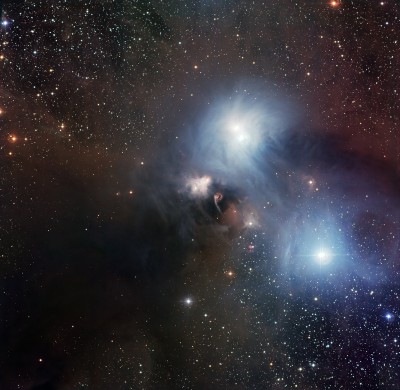 John points us to the skies, where we will see stars. And John points us to a star-lit world, urging us to see epiphanies.
John points us to the skies, where we will see stars. And John points us to a star-lit world, urging us to see epiphanies.
Matthew tells us Wise Men from the East are coming, and they will bring gifts which are amazing, rare, and filled with possibility and foreboding. As life is. The season of epiphanies beckons us to discoveries such as these, which will open our eyes, hearts, and minds, and allow us to see God, not in a single moment of beginning, but in endless beginnings in which God will again and again be born among us.
There is heard a hymn when the light is dim,
and never before or again,
when the nights are strong with a darkness long
and the dark is alive with rain.
Never we know but in sleet and in snow
the place where the great fires are,
that the midst of the earth is a raging mirth
and the heart of the earth a star.
And at night we wend to the ancient inn
where the Child in the frost is furled,
we follow the feet where all souls meet
at the inn at the end of the world.
The gods lie dead where the leaves lie red,
for the flame of the sun is flown.
the gods lie cold where the leaves lie gold,
and a Child comes forth, alone.
-G.K. Chesterton
___________________________________________________
Illustrations:
1. Creation Day 2. mid 12th century. Cappella di Palatina, Palermo, Italy. Vanderbilt Divinity School Library Art in the Christian Tradition.
2. Creation Day 5 mid 12th century. Cappella Palatina di Palermo. Vanderbilt Divinity School Library Art in the Christian Tradition.
3. It’s a Wonderful Life, freeze frame of George Bailey and Clarence Oddbody.
4. R Coronae Australis 2010. Taken at European Southern Observatory. La Silla, Chile. Vanderbilt Divinity School Library Art in the Christian Tradition.


